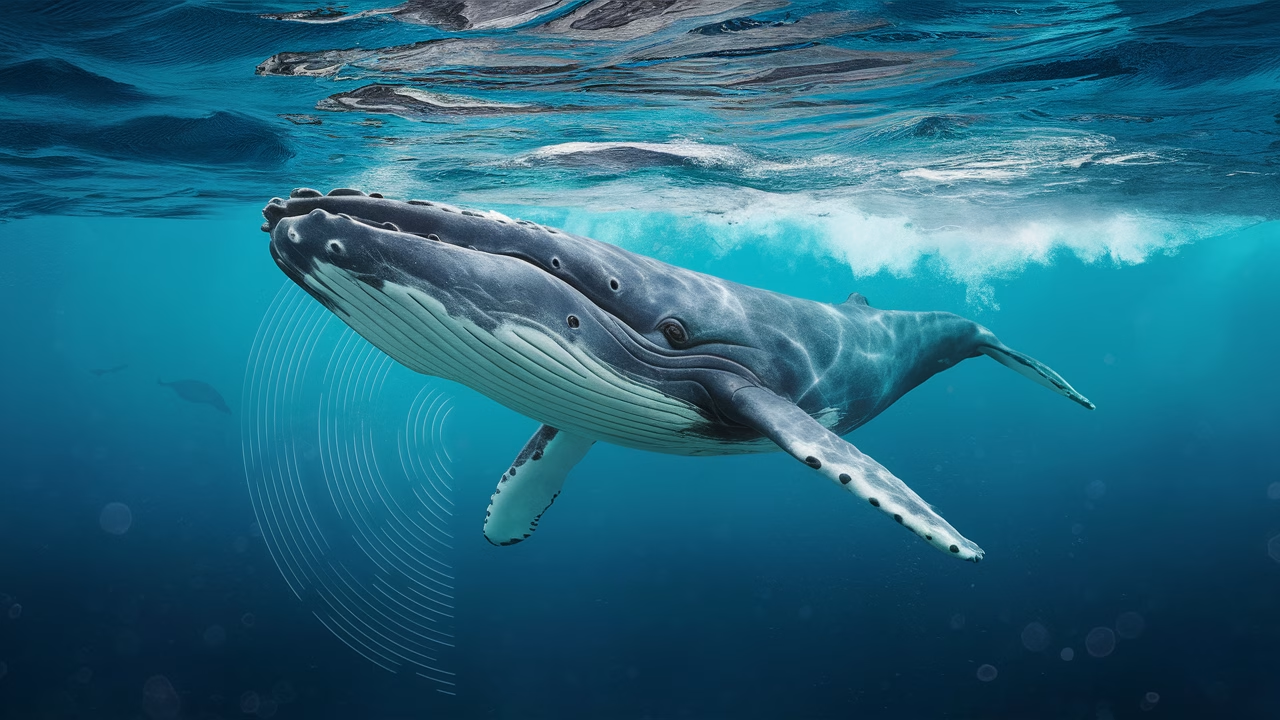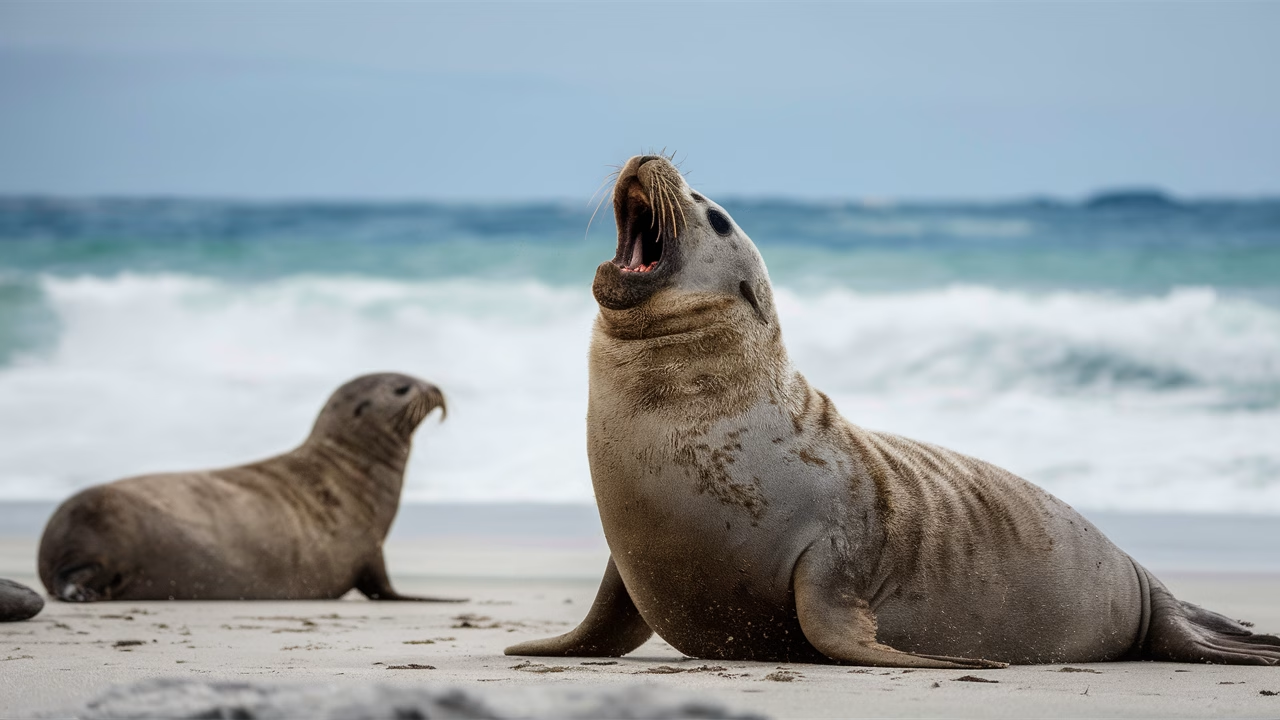What Are the Loudest Animals in the World and Why Are They So Noisy?
Animals use sound to survive—from wooing mates and warning rivals to navigating vast oceans. But which species top the charts in nature’s noise rankings, and how do they produce such astonishing sounds?
- Blue whales are the loudest marine mammals—reaching up to 188 dB underwater.
- Sperm whales produce clicks that peak at 230 dB—the loudest biologically produced sound ever measured.
- Howler monkeys reach 140 dB and can be heard 3 miles away in tropical forests.
- Snapping shrimp use cavitation bubbles to stun prey—producing over 218 dB.
- Evolutionary adaptations like large vocal chambers or special bone structures help amplify these extreme sounds.
These vocal powerhouses are more than trivia answers—they are marvels of biological engineering, each with unique adaptations for communication, survival, or sonar-level hunting. Let’s dive into the top contenders in the natural world’s ultimate sound-off.
Blue Whale: The Ocean’s Loudest Animal Champion
The World’s Loudest Mammal
The blue whale isn’t just Earth’s largest animal—it also holds the title as one of the loudest animals in the ocean. These majestic marine mammals emit deep, resonant calls reaching up to 188 decibels. That’s louder than a commercial jet engine and travels hundreds of kilometers underwater.
What makes these loudest animal sounds so powerful? Blue whales use low-frequency moans and pulses in the 10–40 Hz range, perfect for long-distance communication. Their massive lungs, specialized larynxes, and enormous resonance chambers create these infrasonic vibrations, which allow whales to “sing” their messages across entire ocean basins.
But it’s not all loud for the sake of loud. Their songs play critical roles in attracting mates, coordinating migrations, and orienting via acoustic landmarks in the vast, dark blue.
Howler Monkey: The Loudest Land Animal’s Jungle Megaphone
If you’ve ever walked through a rainforest and heard what sounded like possessed gorillas arguing with ghosts, chances are you encountered a howler monkey. At up to 140 dB, their roars echo through the forests of Central and South America for up to three miles, making them among the loudest animals on land.
What’s the secret behind their volume? Evolution rewired their neck anatomy. Specifically, the hyoid bone—a U-shaped structure in their throat—is massive and hollow, functioning like a resonance chamber or natural subwoofer. This adaptation helps produce some of the loudest animal calls in terrestrial environments.
Males often form “choruses” during dawn or dusk, vocalizing together to establish territory and flex sonic dominance to rival troops. It’s less of a battle and more of a boy band flexing their bass drop.
Sperm Whale: Master of the Loudest Animal Sound Ever Recorded
The sperm whale may not be a screamer, but it’s certainly the sonic king in terms of raw decibel output. Its series of echolocation clicks—used in hunting and navigation—can reach an almost unfathomable 230 dB, making it the loudest sound produced by any known animal and earning it the title of loudest animal overall.
This click-based communication isn’t just loud for the heck of it; it’s surgical in purpose. The whale uses these “clicks” to map the pitch-black ocean with sonar-like echolocation. Some scientists believe these acoustic bursts are strong enough to stun or disorient prey such as squid—an adaptation dubbed “bio-sonic hunting.”
The sound originates from structures in their head called the spermaceti organ and monkey lips—a complex system that compresses air and releases it with powerful vibrations. Think of it as nature’s sonar cannon among the loudest animals in the world.
Greater Bulldog Bat: Airborne Sonar Champion
These fishing bats don’t just whisper through the night — they scream. Greater bulldog bats rely on echolocation screeches to detect water ripples made by fish. Their calls reach up to 140 dB — and that’s from a creature that weighs less than a candy bar, making them surprisingly loud animals for their size.
With massive cheek pouches and specialized nasal cavities, these bats produce ultrasonic calls fine-tuned for aquatic prey detection. It’s like turning a tiny mammal into an airborne sonar gun, capable of locating meals without ever touching the water.
Northern Elephant Seal: The Beach’s Loudest Animal
Roaring Giants of the Shoreline
Walk along the Pacific coast during breeding season, and you’ll hear something that sounds like a revving diesel engine. That’s the northern elephant seal, one of the loudest animals on beaches worldwide. Males use their inflatable proboscises—yes, trunk-like noses—to blast deep grunts and growls during beachside dominance duels.
When rival seals clash over harems, it’s more of a verbal boxing match than a purely physical one. These calls can reach well over 120 dB and are critical to establishing social hierarchy within massive breeding colonies. Essentially, whoever roars louder may get the girl—and avoid a face full of flippers.
Snapping Shrimp: Tiny Crustacean, Loudest Animal Sound
Don’t let their small size fool you—snapping shrimp pack an incredible acoustic punch. These tiny crustaceans create cavitation bubbles with their specialized claws, producing sounds that can reach 218 dB. That makes them contenders for the loudest animals in the ocean, despite being smaller than your thumb.
When the bubble collapses, it creates a shockwave powerful enough to stun small fish and other prey. This remarkable adaptation has earned snapping shrimp a spot among the most impressive loudest animals, proving that size doesn’t always determine volume in nature’s sound competition.
Comparison Chart: The Natural World’s Loudest Sound Machines
| Animal | Peak Volume (dB) | Environment | Primary Purpose |
|---|---|---|---|
| Sperm Whale | 230 | Ocean | Echolocation, hunting |
| Snapping Shrimp | 218 | Ocean | Stunning Prey |
| Blue Whale | 188 | Ocean | Long-distance communication |
| Howler Monkey | 140 | Forest | Territorial defense |
| Bull Dog Bat | 140 | Freshwater lakes | Echo-hunting |
| Northern Elephant Seal | 126 | Beaches | Mate competition |
Conclusion: Nature’s Symphony of Loudest Animal Voices
From the thunderous moans of giant whales echoing across undersea mountain ranges to the crackling sonic snaps of shrimp wars, Earth’s loudest animals create a symphony that’s far from quiet. Every bark, click, roar, and screech has evolved with a biologically strategic role—whether to find food, fend off competitors, or broadcast desire across canopies and abysses.
Next time you hear a distant animal call in the wild, pause and consider: it’s not just noise—it’s history, survival, and biological brilliance wrapped in decibels. These loudest animals in the world have turned nature’s volume up to eleven, creating some of the most remarkable sounds on our planet.
How Do Cuttlefish Count? Scientists Reveal Their Hidden Math Skills
FAQs
How loud is a blue whale compared to other animals?
Blue whales can reach 188 dB underwater, making them one of the loudest marine mammals—louder than a jet engine.
Are loud animal sounds dangerous to humans?
In-air, you’re unlikely to be harmed, but underwater clicks from whales or snapping shrimp can cause damage if extremely close.
Why do animals evolve to be loud?
Loud calls serve many evolutionary functions, like attracting mates, marking territory, hunting, or navigating via echolocation.
Which bird has the loudest call?
The white bellbird projects its calls at 125 dB—making it the loudest known bird.
Can animals hear sounds this loud themselves?
Yes, many of these animals have specialized anatomy to both produce and withstand loud volumes, including internal dampeners or precise frequency filtering.
Do insects make loud noises too?
Absolutely. Cicadas, for example, can reach 120 dB with their mating chirps using specialized membranes called tymbals.
Is the snapping shrimp louder than a whale?
In terms of peak volume measured during the shrimp’s snap (218 dB), yes—although it’s produced very differently than a whale’s vocal call.





